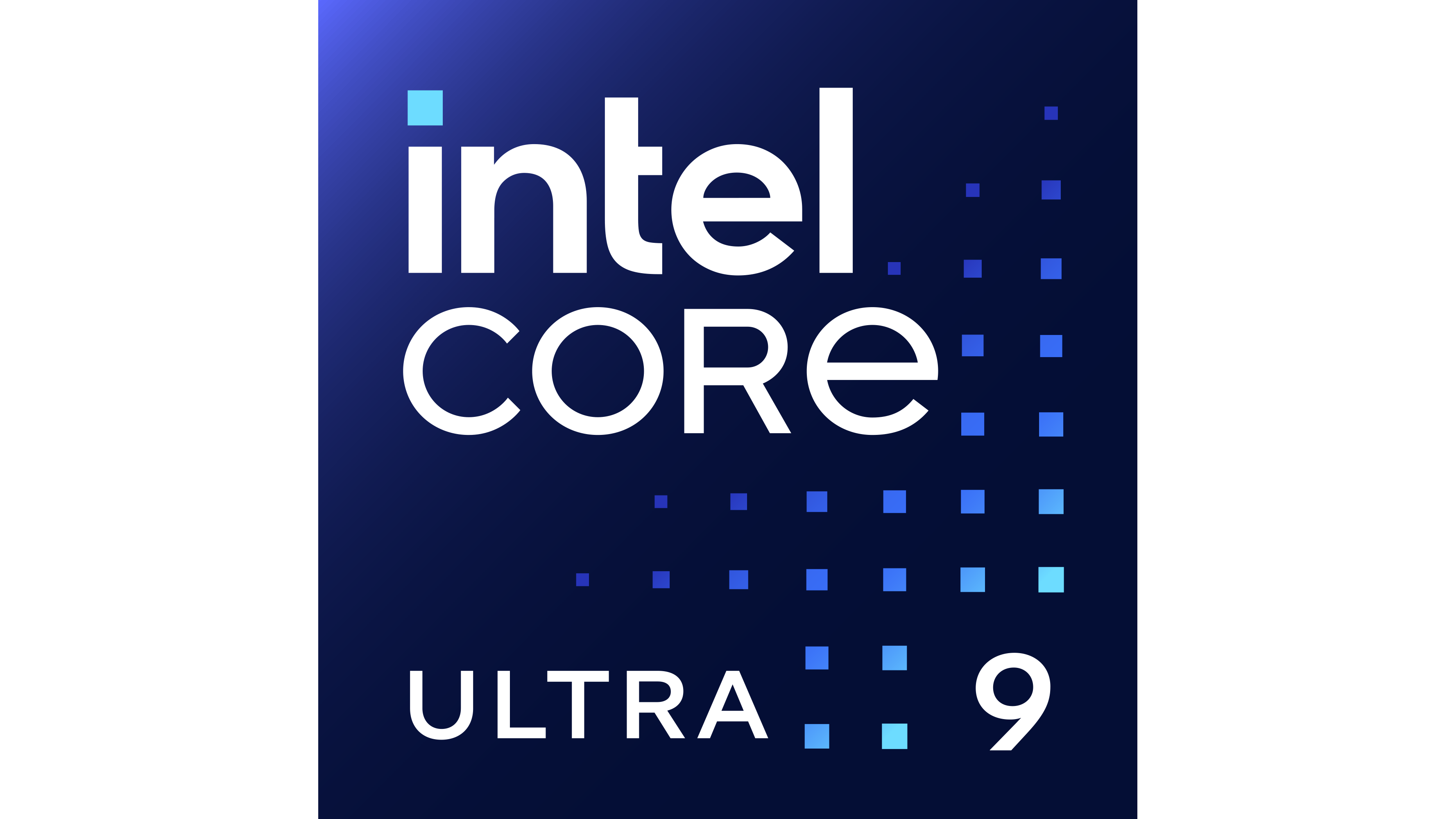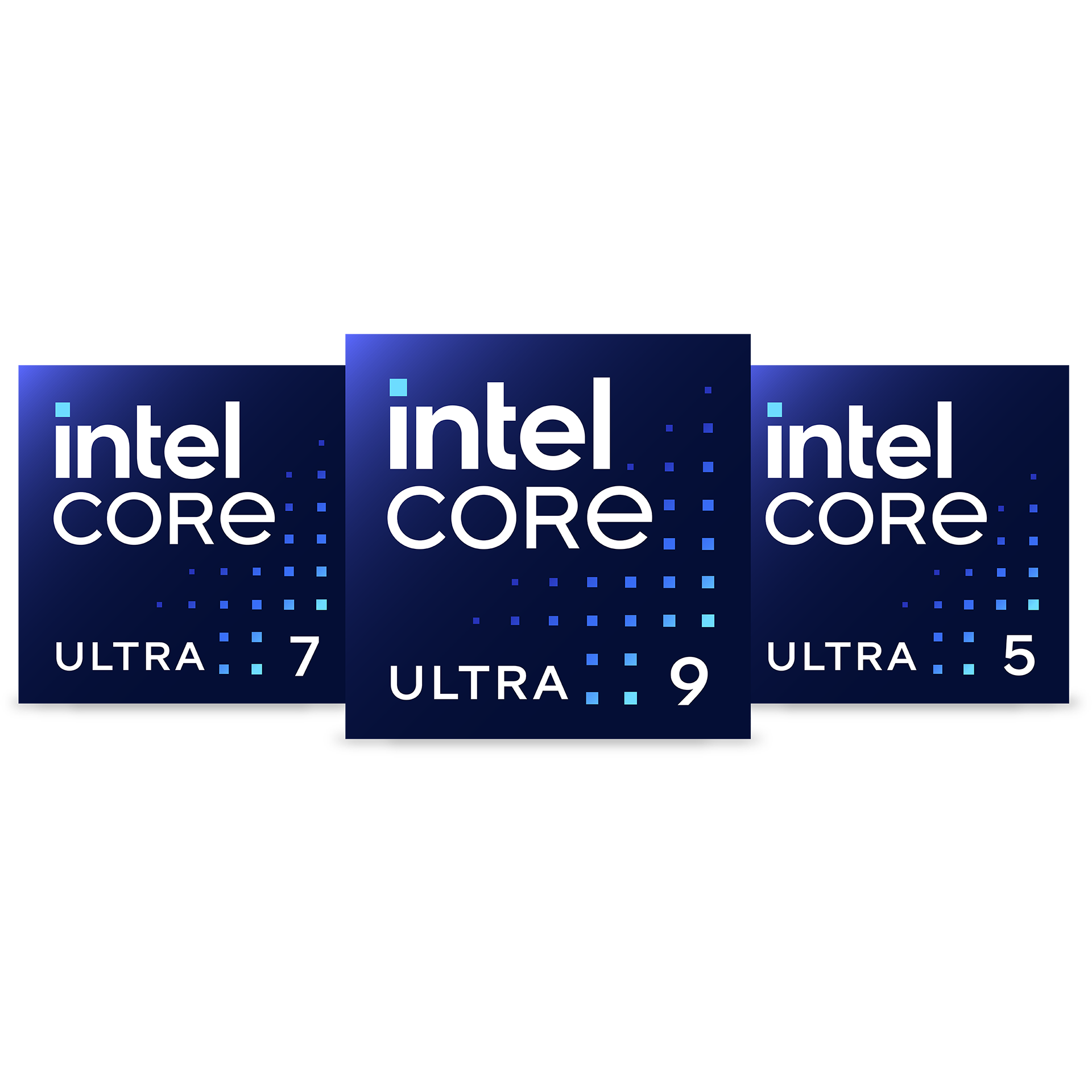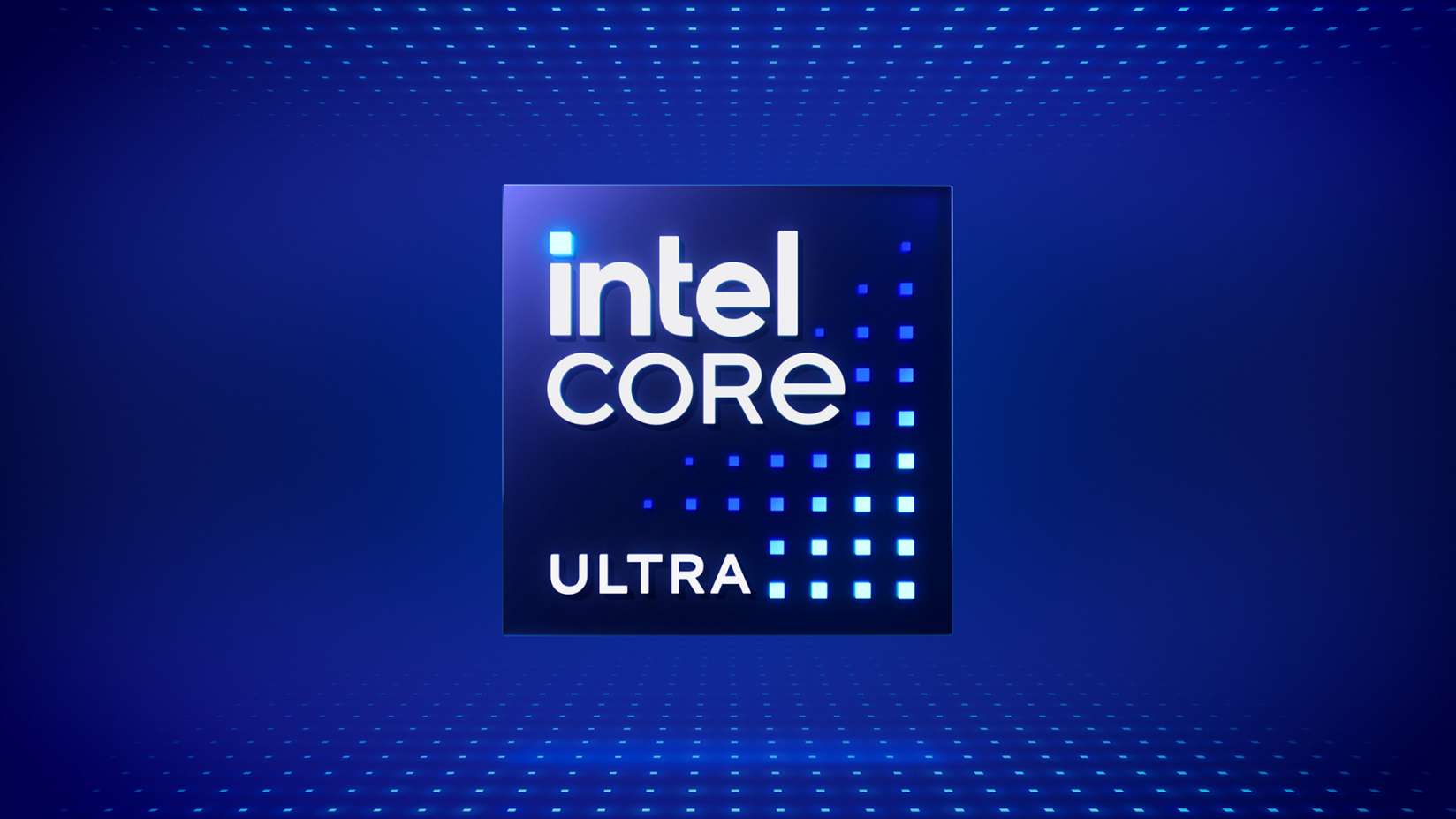Why Intel Re-branded Its Flagship Line
Intel’s new Core Ultra name isn’t marketing fluff—it signals the first desktop and laptop chips purpose-built for “AI PCs.” Every Ultra 9 SKU bakes a low-power neural processing unit (NPU) and beefed-up Arc graphics directly into the package, letting Windows Copilot, Adobe Firefly, and on-device diffusion models run 2-3× faster than on last-gen Core i9 parts. In practice, that means smoother real-time video up-scaling, faster object removal in Photoshop, and whisper-quiet background-blur during video calls—all without spiking the fans.

Specs at a Glance
| Model | Core / Thread Count | Base / Boost Clock | Cache | Integrated GPU | NPU TOPS | TDP (Configurable) |
|---|---|---|---|---|---|---|
| Ultra 9 285K (desktop) | 24C / 32T (8P+16E) | 3.3 GHz / 5.7 GHz | 36 MB L3 | Arc Xe-LP (8 Xe-cores) | 18 TOPS | 125 W (95–253 W) |
| Ultra 9 185H (laptop) | 16C / 22T (6P+8E+2LP) | 2.5 GHz / 5.1 GHz | 24 MB L3 | Arc Xe-LPG (6 Xe-cores) | 11 TOPS | 45 W (28–115 W) |
P-cores = Performance, E-cores = Efficiency, LP = Low-power E-cores.

Real-World Performance Gains
- AI & Media: Early DaVinci Resolve and Topaz up-scaling tests show 2–6× faster exports versus a 14900K when the NPU and Arc GPU are enabled.
- Productivity: Multi-core rendering scores leap roughly 20 % over Gen 14 while using 120–150 W less wall power in Cinebench loops.
- Linux: A flurry of firmware patches since launch has lifted kernel-compile and Blender runs by an extra 6 %—good news for creators dual-booting or living in Ubuntu.
- Thermals: Even at stock settings, the 285K stays 10–20 °C below throttle limits in 4K Blender cycles, leaving headroom for silent or small-form-factor builds.
Gaming: Power-Sip, Yet Still a Step Behind X3D
Flip on a modern AAA title and the Ultra 9’s power draw shrinks stunningly—system-level savings can hit 150 W compared with the 14900K. Frame rates, however, trail AMD’s 7800X3D/9950X3D by 5–12 % at 1080p. Reviewers attribute the gap to immature BIOS tuning and Windows thread scheduling that occasionally parks P-cores mid-game. Intel promises microcode refinements throughout 2025, but for now the chip shines more as a creator’s workhorse than an esports secret weapon.

Platform Upgrades and Pairings
- Socket & Chipset: Desktops move to LGA 1851 and Z890/B860 motherboards—bringing native Wi-Fi 7, up to 60 Gbps USB4, and eCLK overclocking.
- Memory: Official DDR5-6400 support scales to 192 GB, while enthusiasts are already validating XMP kits at 7800 MT/s.
- GPU Combos: Vendors are pitching Ultra 9 rigs with everything from RTX 4080 SUPER to the whispered RTX 5090; the CPU’s lower thermal footprint means quieter dual-rad AIOs or even air coolers suffice.
- Laptops: The 185H shows up in 16-inch “AI studio” notebooks featuring 120 Hz OLED panels and dual-fan vapor chambers—solid all-rounders for video editors who travel.
Upgrade Math: Who Actually Benefits?
- On Old Hardware (10th Gen or earlier): The leap in core count, PCIe 5.0 lanes, AV1 encode, and NPU acceleration is night-and-day.
- From 13th/14th Gen Intel: Gains hover between 5–21 % in creator apps. Worth it if you value halved power consumption or want to future-proof for local AI tooling.
- Dedicated Gamers: Unless you stream or create on the side, AMD’s 3D-V-Cache chips still eke out higher FPS per dollar.
- Linux & Thin-and-Light Users: Arrow Lake’s efficiency plus ongoing kernel optimizations make Ultra 9 laptops attractive for coding, compiling, and container workflows.
The Bottom Line
Intel Core Ultra 9 pivots the flagship narrative from brute-force clocks to balanced AI acceleration and energy efficiency. It may not unseat AMD’s X3D parts in raw gaming frames, but for creators, streamers, and anyone eager to run on-device AI without a dedicated accelerator card, Ultra 9 delivers a compelling, cooler-running platform that feels built for the next wave of PC workloads.
Key Takeaways
- Intel Core Ultra 9 processors deliver substantial performance improvements while significantly reducing power consumption and heat output.
- The flagship 285K desktop model features 24 cores reaching 5.70 GHz, while the 185H mobile variant offers 5.10 GHz speeds for high-performance laptops.
- These processors maintain excellent thermal characteristics even under prolonged stress, making them suitable for demanding workloads without thermal throttling concerns.
Intel Core Ultra 9 Overview
The Intel Core Ultra 9 represents Intel’s latest high-performance processor lineup, featuring significant architectural improvements and reduced power consumption compared to previous generations.
Evolution of the Core Series
Intel’s Core series has undergone substantial evolution with the introduction of the Ultra 9 processors. These chips represent a significant departure from previous generations, implementing Intel’s hybrid architecture that combines different types of cores on a single chip.
The Ultra 9 family uses a mix of Performance cores (P-cores), Efficient cores (E-cores), and in some mobile variants, Low Power Efficient cores (LP E-cores). This hybrid approach allows for better performance scaling and improved power efficiency.
Compared to previous generations, the Ultra 9 processors operate at lower peak frequencies but deliver comparable or improved performance through architectural enhancements. The mobile chips like the 185H feature 16 total cores (6 P-cores, 8 E-cores, 2 LP E-cores), while desktop variants like the 285K offer even more cores.
The Core Ultra 9 285K Difference
The Core Ultra 9 285K represents Intel’s flagship desktop processor in the Arrow Lake generation. This powerful chip packs 24 total cores, configured as 8 Performance cores and 16 Efficient cores, with 24 total threads.
One notable change from previous generations is the maximum clock speed. The 285K reaches 5.7 GHz, which is 300 MHz lower than the prior generation 14900K’s 6 GHz boost. However, the architectural improvements compensate for this frequency reduction.
The most impressive advancement is power efficiency. Users report significantly lower power consumption compared to previous generation chips while maintaining competitive performance. This efficiency gain represents one of the most substantial improvements in the Core Ultra 9 lineup.
The 285K also features 36MB of cache, helping to reduce memory latency and improve overall system responsiveness for demanding workloads.
OEM Enablement and System Vendor Collaboration
Intel has worked closely with OEMs and system vendors to ensure the Core Ultra 9 delivers optimal performance across various platforms. This collaboration has been crucial for the successful implementation of the hybrid architecture.
System vendors have developed specialized cooling solutions to handle the thermal characteristics of the Ultra 9 processors. Despite the improved efficiency, these high-performance chips still require effective thermal management, especially when pushed to their limits.
Intel has provided OEMs with extensive support for power management features, allowing system vendors to create balanced configurations that maximize performance while maintaining reasonable power consumption and heat output.
Many premium laptop and desktop manufacturers have adopted the Core Ultra 9 for their flagship products, showcasing the processor’s capabilities in various form factors. This wide adoption demonstrates the processor’s versatility and the strong relationships Intel has built with its system partners.
In-Depth Specifications and Features
Intel Core Ultra 9 processors represent the pinnacle of Intel’s latest CPU technology. These processors combine high core counts, advanced manufacturing processes, and integrated AI capabilities to deliver exceptional performance across various computing tasks.
Processor Numbers and Identification
The Intel Core Ultra 9 lineup includes two notable models: the 185H and 285K. The 185H is designed for high-performance laptops, featuring 16 total cores (6 Performance cores, 8 Efficient cores, and 2 Low Power Efficient cores) with 22 threads. It operates at base frequencies and can boost up to 5.1 GHz under demanding workloads.
The 285K, Intel’s desktop flagship, boasts an impressive 24 cores (8 Performance cores and 16 Efficient cores) with 24 threads. This processor runs at a base clock of 3.7 GHz and can reach maximum boost frequencies of 5.7 GHz.
Intel’s processor naming convention follows a structured format:
| Segment | Brand | Generation | SKU | Suffix |
|---|---|---|---|---|
| Intel® | Core™ Ultra | 9 | 185/285 | H/K |
The “H” suffix indicates high-performance mobile processors, while “K” denotes unlocked desktop processors for overclocking.
Integrated Graphics Capabilities
Core Ultra 9 processors feature Intel’s advanced integrated graphics architecture. These integrated GPUs support modern graphics standards and provide hardware acceleration for video encoding and decoding.
The integrated graphics can handle everyday computing tasks, multimedia consumption, and casual gaming without requiring a discrete graphics card. They support multiple display outputs and various resolution standards including 4K.
Key graphics features include support for DirectX 12, OpenGL, and other modern graphics APIs. The integrated solution also includes dedicated hardware for video processing, reducing CPU load during video playback and conferencing.
For users requiring more graphics power, both the 185H and 285K can be paired with discrete GPUs for enhanced performance in gaming and content creation workloads.
Boost and Memory Technologies
Intel Core Ultra 9 processors implement sophisticated boost technologies that dynamically adjust clock speeds based on workload demands and thermal conditions. The 185H can boost up to 5.1 GHz, while the 285K reaches an impressive 5.7 GHz under optimal conditions.
Turbo Boost Technology 3.0 identifies the processor’s fastest cores and directs critical workloads to these cores for maximum single-threaded performance. This technology is particularly beneficial for applications that don’t fully utilize all available cores.
These processors support dual-channel DDR5 memory configurations, enabling high-bandwidth memory access. DDR5 support allows for faster data transfer rates compared to previous DDR4 systems.
The large cache sizes (36MB on the 285K) help minimize memory latency by storing frequently accessed data closer to the processing cores. This cache hierarchy includes dedicated L1 and L2 caches for individual cores and a shared L3 cache.
Product Features and Functionality
Core Ultra 9 processors incorporate several advanced features that enhance overall system performance and efficiency. The hybrid architecture combines different core types to optimize for both performance and efficiency.
Performance cores (P-cores) handle demanding, high-priority tasks that benefit from maximum single-threaded performance. Efficient cores (E-cores) manage background tasks and multi-threaded workloads more power-efficiently.
Built-in AI acceleration capabilities support machine learning workloads. These processors include hardware optimizations for common AI operations, improving performance in AI-enhanced applications.
Security features include hardware-based protections against various threats. Advanced encryption capabilities help secure sensitive data without significant performance penalties.
Thermal design considerations allow these processors to maintain high performance under sustained loads. The 285K particularly benefits from its desktop form factor with greater thermal headroom.
Manufacturing Life Cycle and ECCN
Intel Core Ultra 9 processors are manufactured using Intel’s advanced process nodes. These chips represent Intel’s commitment to continuous improvement in semiconductor manufacturing technology.
The Export Control Classification Number (ECCN) for these processors regulates their export under international trade regulations. Intel processors typically fall under specific ECCNs related to microprocessors and integrated circuits.
Product lifecycle management ensures continued support through various phases from introduction to eventual end-of-life. Intel typically provides several years of production and support for each processor generation.
The Harmonized Tariff Schedule (HTS) classification affects import duties and taxes when these processors are shipped internationally. These classifications are important considerations for system builders and OEMs who distribute globally.
Intel maintains documentation on product longevity to help businesses plan their technology deployments and upgrades. This information helps organizations make informed decisions about when to adopt new processor technologies.
Performance Analysis and Benchmarks
Intel’s Core Ultra 9 processors deliver mixed results in benchmarks, showing modest single-threaded gains while focusing on power efficiency improvements. The latest models maintain Intel’s competitive position in high-performance computing but with varying degrees of success across different workloads.
Core Ultra 9 Performance Metrics
The Core Ultra 9 285K shows a modest 3% improvement in single-threaded performance over the previous 14900K model. This small but meaningful gain helps Intel maintain its position at the top of performance leaderboards in certain tests.
Core Ultra 9 185H mobile variant demonstrates impressive throughput in synthetic benchmarks, achieving approximately 39,530 thousand strings per second in string processing tests. Memory performance reaches 19,908 MB/sec with disk performance at 341,362 KB/sec.
Graphics performance on the mobile variant delivers around 1,967 frames per second in standardized tests. These numbers reflect Intel’s ongoing effort to balance raw performance with efficiency in both desktop and mobile platforms.
Power Efficiency and Thermal Design
The Core Ultra processors represent Intel’s renewed focus on efficiency after previous generations like the 90nm Prescott-based Pentium 4, which was notorious for high power consumption and heat output without proportional performance gains.
Arrow Lake architecture in the Core Ultra 9 285K specifically addresses these concerns with improved thermal design. This enables sustained performance under heavy loads without excessive throttling that plagued some earlier generations.
The mobile Core Ultra 9 chips include integrated Arc graphics solutions, with the 285H featuring the Arc 140T GPU. This integration helps manage system thermals more effectively in thin laptop designs while still delivering acceptable graphics performance.
Comparison with Previous Generations
Core Ultra 9 represents a significant departure from the Raptor Lake architecture found in the previous 14900K series. While single-core gains are modest at 6% in some benchmarks, the efficiency improvements are more substantial.
The new Ultra 9 processors include dedicated NPU (Neural Processing Unit) hardware for AI acceleration, a feature absent in previous generations. This addition helps Intel compete with AMD’s Ryzen AI offerings in machine learning workloads.
Unlike the problematic transition to Prescott in 2004, Arrow Lake appears to be a more calculated move that prioritizes performance-per-watt rather than absolute performance alone. This approach better serves modern computing needs where efficiency and thermal management are as important as raw speed.
Technological Advancements and Future Outlook
The Intel Core Ultra 9 represents a significant leap in computing technology with its innovative architecture and capabilities designed for next-generation computing demands. The processor brings improvements in AI performance, connectivity, and multi-threading capabilities that position it at the forefront of modern computing.
AI Acceleration and NPU Integration
The Core Ultra 9 processors showcase Intel’s commitment to AI with dedicated Neural Processing Units (NPUs). These NPUs handle AI workloads separately from the main CPU, enabling faster and more efficient AI processing. According to the latest CES 2025 announcements, the new Core Ultra 9 delivers 2-3x performance improvements in AI workloads compared to previous generations.
The integrated NPU allows for on-device AI processing, reducing the need to send data to the cloud. This enables better privacy and faster response times for AI applications like image processing and voice recognition.
Intel has optimized the Core Ultra 9’s architecture to balance performance and power efficiency. This makes it particularly suitable for demanding AI tasks in both desktop and mobile form factors without excessive power consumption.
The Rise of Wi-Fi 7 and Connectivity Features
Core Ultra 9 processors feature built-in support for Wi-Fi 7, the latest wireless connectivity standard. This provides theoretical speeds up to 46 Gbps, nearly 5x faster than Wi-Fi 6.
The improved connectivity enables ultra-low latency for competitive gaming and seamless streaming of high-resolution content. Wi-Fi 7 also introduces Multi-Link Operation, allowing devices to connect to multiple frequency bands simultaneously for more stable connections.
Beyond Wi-Fi, the Core Ultra 9 includes enhanced Bluetooth capabilities and Thunderbolt connectivity. These features support the increasing demands of modern peripherals and high-bandwidth devices like external GPUs and high-resolution displays.
Intel has also improved the integrated Intel Iris Xe graphics to better handle video encoding and streaming capabilities, complementing the enhanced connectivity features.
The Impact of Hyper-Threading on Modern Workloads
The Core Ultra 9 leverages advanced Hyper-Threading technology across its 24 cores, which include both Performance (P-cores) and Efficiency (E-cores). This hybrid architecture allows for more effective thread management based on workload requirements.
P-cores handle demanding tasks requiring maximum processing power, while E-cores manage background processes efficiently. This division results in better overall system responsiveness and power management.
Modern applications and operating systems are increasingly optimized to take advantage of multi-threaded processors. The Core Ultra 9’s implementation of Hyper-Threading allows it to handle up to 32 threads simultaneously, significantly improving performance in content creation, simulation, and scientific computing.
The processor also includes AES New Instructions for hardware-accelerated encryption, making security processes faster and more efficient without burdening the main computing resources.
Frequently Asked Questions
Intel’s Core Ultra 9 processors represent significant advancements in computing technology with improved architecture, enhanced performance, and better thermal efficiency compared to previous generations.
What are the primary differences between Intel Core Ultra 9 and i9 processors?
The Intel Core Ultra 9 introduces a hybrid architecture design that wasn’t present in traditional i9 processors. This new design includes different types of cores working together.
Core Ultra 9 features Performance (P) cores along with Efficiency (E) cores, while traditional i9 models typically used a homogeneous core design. The Core Ultra 9 285K has a base frequency of 2.3 GHz for its P-cores, with boost capabilities up to 5.1 GHz.
Intel Core Ultra 9 also benefits from improved integrated graphics and dedicated neural processing units for AI tasks that weren’t available in previous i9 generations.
Can you detail the performance enhancements of the Intel Core Ultra 9 over previous generations?
The Core Ultra 9 offers notable improvements in both single-core and multi-core performance compared to previous generations. Engineers have optimized the processor architecture to deliver better performance per watt.
Thermal management has seen significant improvement, with the Core Ultra 9 285K running much cooler than previous generations like the 14KS, which needed more advanced cooling solutions.
The new processors also feature enhanced tuning capabilities and optimizations for creative workloads, making them particularly suitable for content creators.
What is the expected price range for the Intel Core Ultra 9 models?
The Intel Core Ultra 9 processors typically position themselves in the premium segment of the market. Most models are priced between $550 and $650 for the desktop variants.
Mobile versions like the Ultra 9 185H generally come in premium laptops starting around $1,500 and going up based on other specifications. Prices may vary based on region, availability, and market demand.
How does the Intel Core Ultra 9 compare to AMD’s Ryzen 7 9800X3D?
The comparison between Intel’s Core Ultra 9 and AMD’s Ryzen 7 9800X3D reveals interesting trade-offs. Intel’s offering excels in certain workloads, particularly those that benefit from its hybrid architecture.
The Ryzen 7 9800X3D, with its 3D V-Cache technology, generally has an advantage in gaming applications where cache size impacts performance significantly. AMD’s offering might provide better value for pure gaming builds.
Recent fixes for the Core Ultra processors have improved their competitive position, though the compute cores remain the weakest aspect of Intel’s latest launch compared to AMD’s strengths.
In terms of gaming applications, is the Intel Core Ultra 9 a significant upgrade over the i7?
For most gaming scenarios, the Core Ultra 9 offers moderate improvements over high-end i7 processors. The performance gains vary significantly depending on the specific game and resolution.
Games that can utilize multiple cores effectively will see better improvements with the Ultra 9. However, many current games don’t fully utilize all the cores available in either processor.
The value proposition depends on individual needs – gamers who also stream or run background applications while gaming will benefit more from the Ultra 9’s additional cores and threads.
What are the efficiency and thermal advantages of the Intel Core Ultra 9 285K and 185H?
The Core Ultra 9 285K runs remarkably cooler than previous generations, with delid cooling solutions being unnecessary according to user reports. This represents a significant improvement over the 14KS model which was known to run hot.
The efficiency improvements come from both architectural changes and manufacturing process refinements. The hybrid core design allows the processor to assign tasks to the most appropriate core type for better power efficiency.
For the 185H mobile variant, these thermal improvements translate to better sustained performance in thin laptops and potentially longer battery life under comparable workloads.







